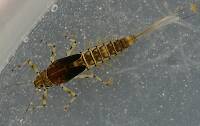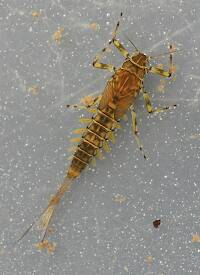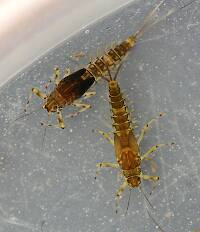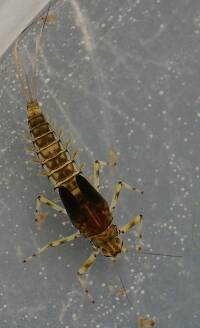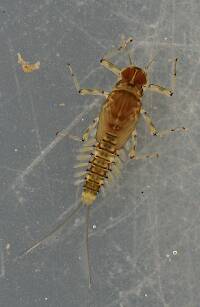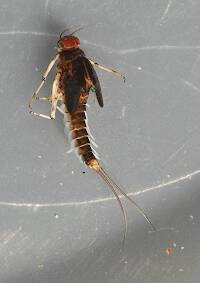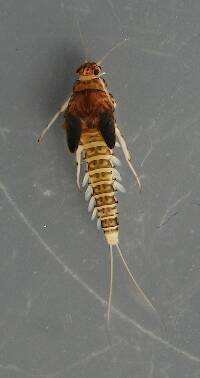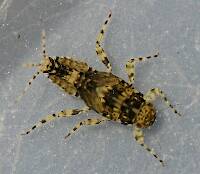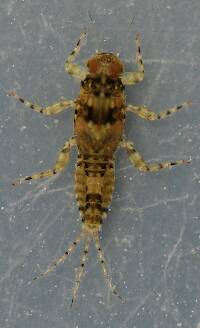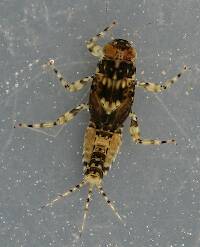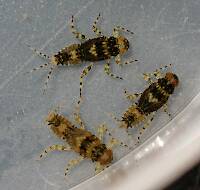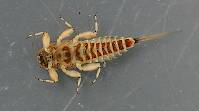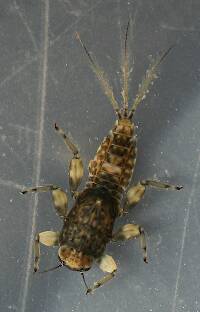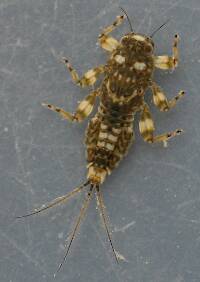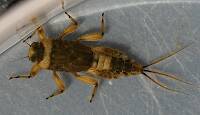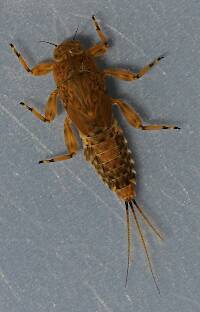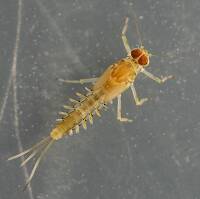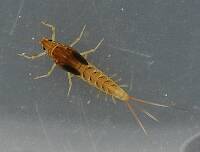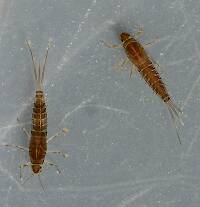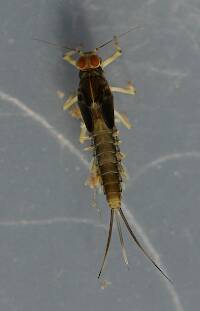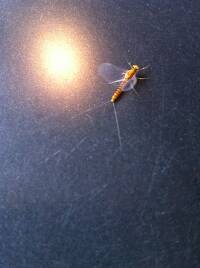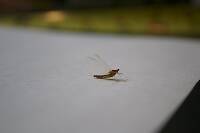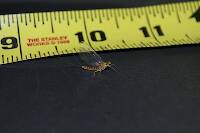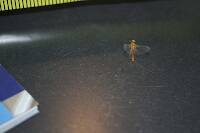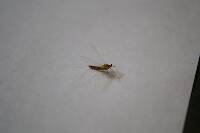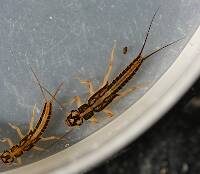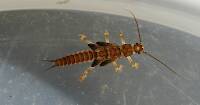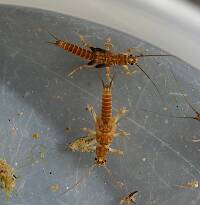
Salmonflies
Pteronarcys californica
The giant Salmonflies of the Western mountains are legendary for their proclivity to elicit consistent dry-fly action and ferocious strikes.
Featured on the forum

I caught this tiny larva without a case, but it seems to key pretty clearly to to Glossosomatidae. From there, the lack of sclerites on the mesonotum points to either Glossosoma or Anagapetus. Although it's difficult to see in a 2D image from the microscope, it's pretty clear in the live 3D view that the pronotum is only excised about 1/3 of its length to accommodate the forecoxa, not 2/3, which points to Glossosoma at Couplet 5 of the Key to Genera of Glossosomatidae Larvae.

Troutnut is a project started in 2003 by salmonid ecologist Jason "Troutnut" Neuswanger to help anglers and
fly tyers unabashedly embrace the entomological side of the sport. Learn more about Troutnut or
support the project for an enhanced experience here.
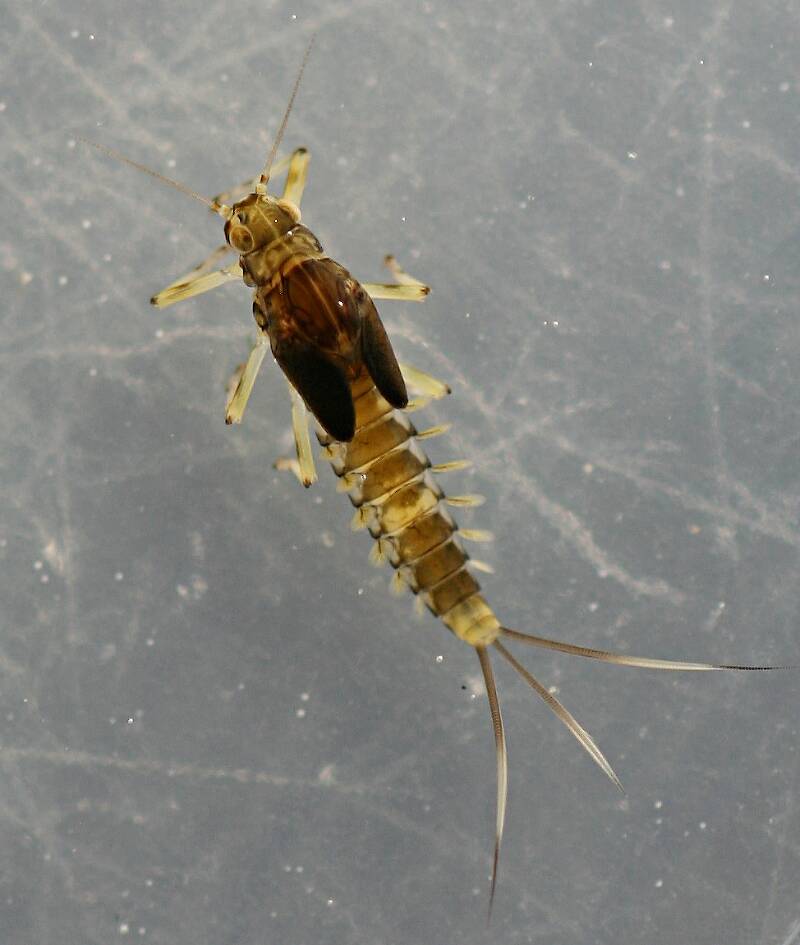
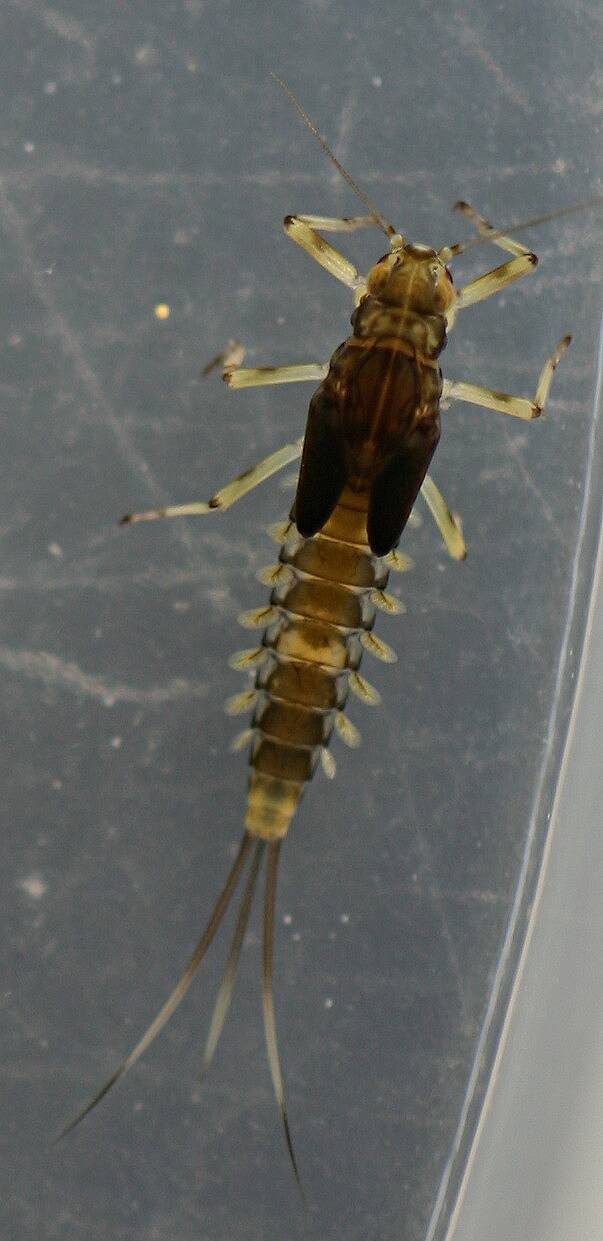

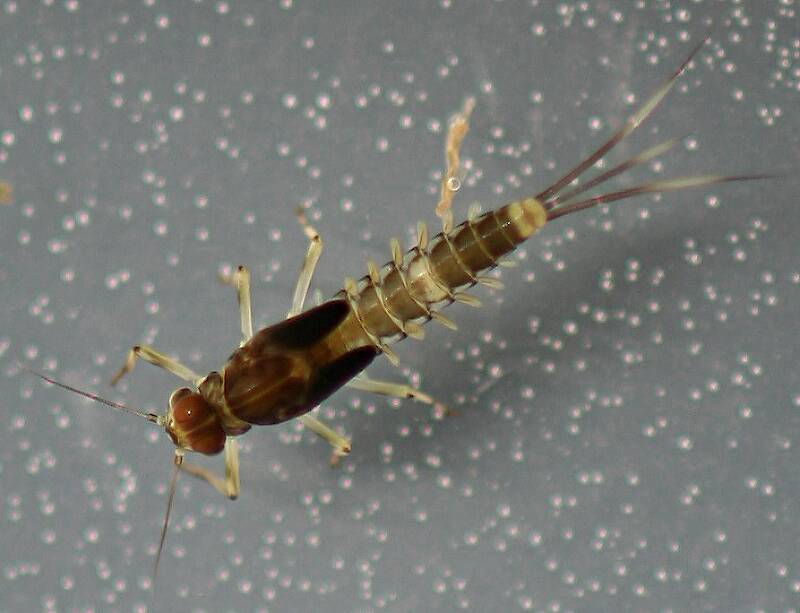
Millcreek on Jan 24, 2015January 24th, 2015, 1:07 pm EST
This mayfly was collected from the Russian River near Healdsburg, Ca. It's common from March through October. It's usually found in shallow water 3-12 inches deep and relatively free of silt with a bottom of sand, gravel and cobble.
It's fairly easy to identify from the dorsal side of the abdomen with section five, nine and ten being mostly light in color. It's also got a mouth with labial palpi having the inner margin of segment 2 slightly convex to nearly straight as opposed to variously concave. It also has the first gill much smaller than the others.
Descriptions to genus were from Merritt, Cummins and Berg (2008). The descriptions to species were from Morihara and McCafferty (1997) "The Baetis Larvae of North America (Baetidae: Ephemeroptera).
http://www.ephemeroptera-galactica.com/pubs/pub_m/pubmoriharad1979p139.pdf
and MacCafferty, Meyer, Randolph and Webb (2008) "Evaluation of Mayfly Species Originally Described as Baetis Leach (Ephemeroptera: Baetidae)From California.
http://www.ephemeroptera-galactica.com/pubs/pub_m/pubmccaffertyw2008p577.pdf
It's fairly easy to identify from the dorsal side of the abdomen with section five, nine and ten being mostly light in color. It's also got a mouth with labial palpi having the inner margin of segment 2 slightly convex to nearly straight as opposed to variously concave. It also has the first gill much smaller than the others.
Descriptions to genus were from Merritt, Cummins and Berg (2008). The descriptions to species were from Morihara and McCafferty (1997) "The Baetis Larvae of North America (Baetidae: Ephemeroptera).
http://www.ephemeroptera-galactica.com/pubs/pub_m/pubmoriharad1979p139.pdf
and MacCafferty, Meyer, Randolph and Webb (2008) "Evaluation of Mayfly Species Originally Described as Baetis Leach (Ephemeroptera: Baetidae)From California.
http://www.ephemeroptera-galactica.com/pubs/pub_m/pubmccaffertyw2008p577.pdf
"If we knew what it was we were doing, it would not be called research, would it?"
-Albert Einstein
-Albert Einstein
Quick Reply
Related Discussions
Topic
Replies
Last Reply
0
Nov 6, 2020
by Troutnut
by Troutnut
12
Nov 12, 2020
by Millcreek
by Millcreek
1
Jul 22, 2006
by Taxon
by Taxon
0
Feb 21, 2018
by Millcreek
by Millcreek


